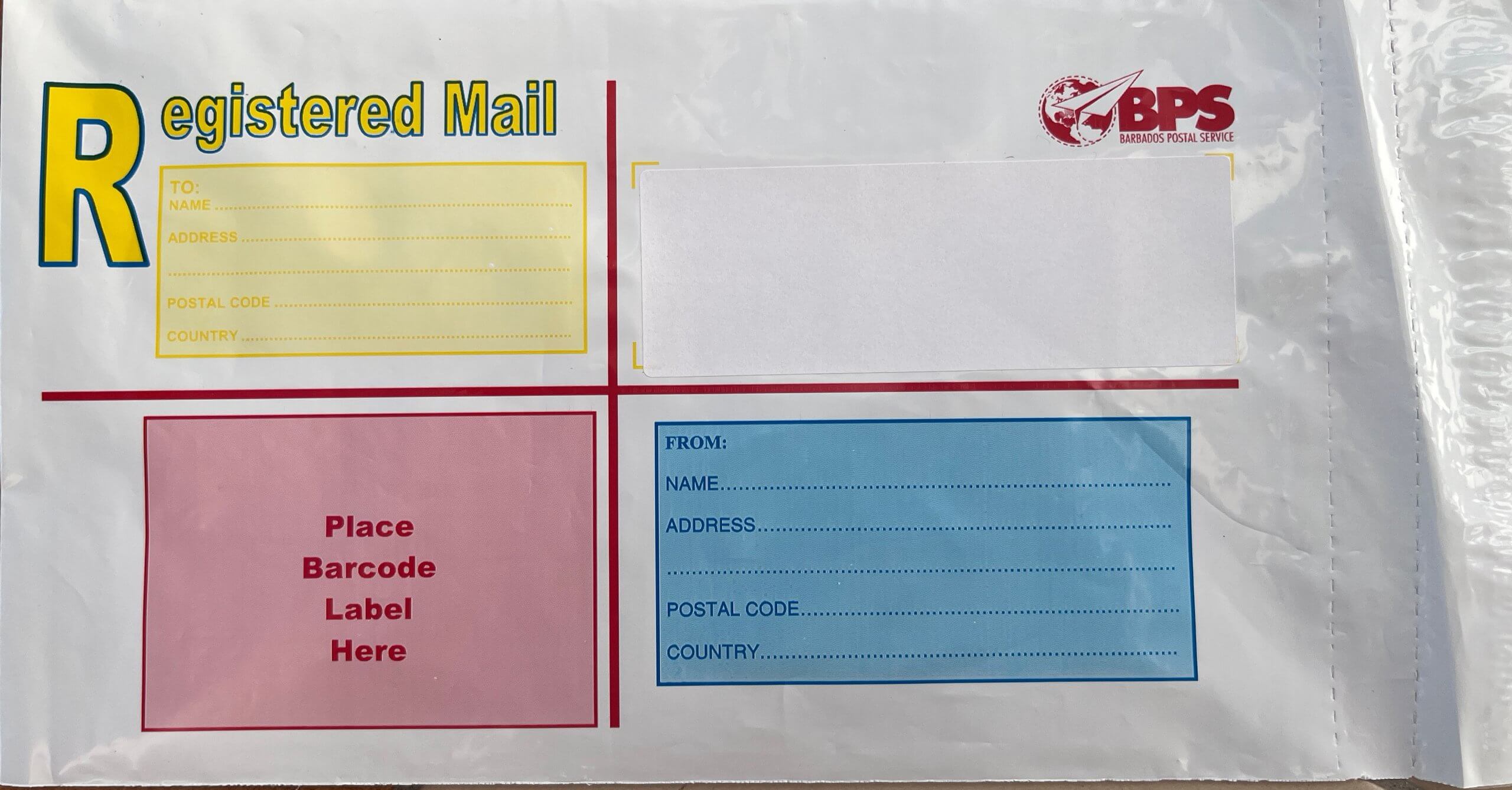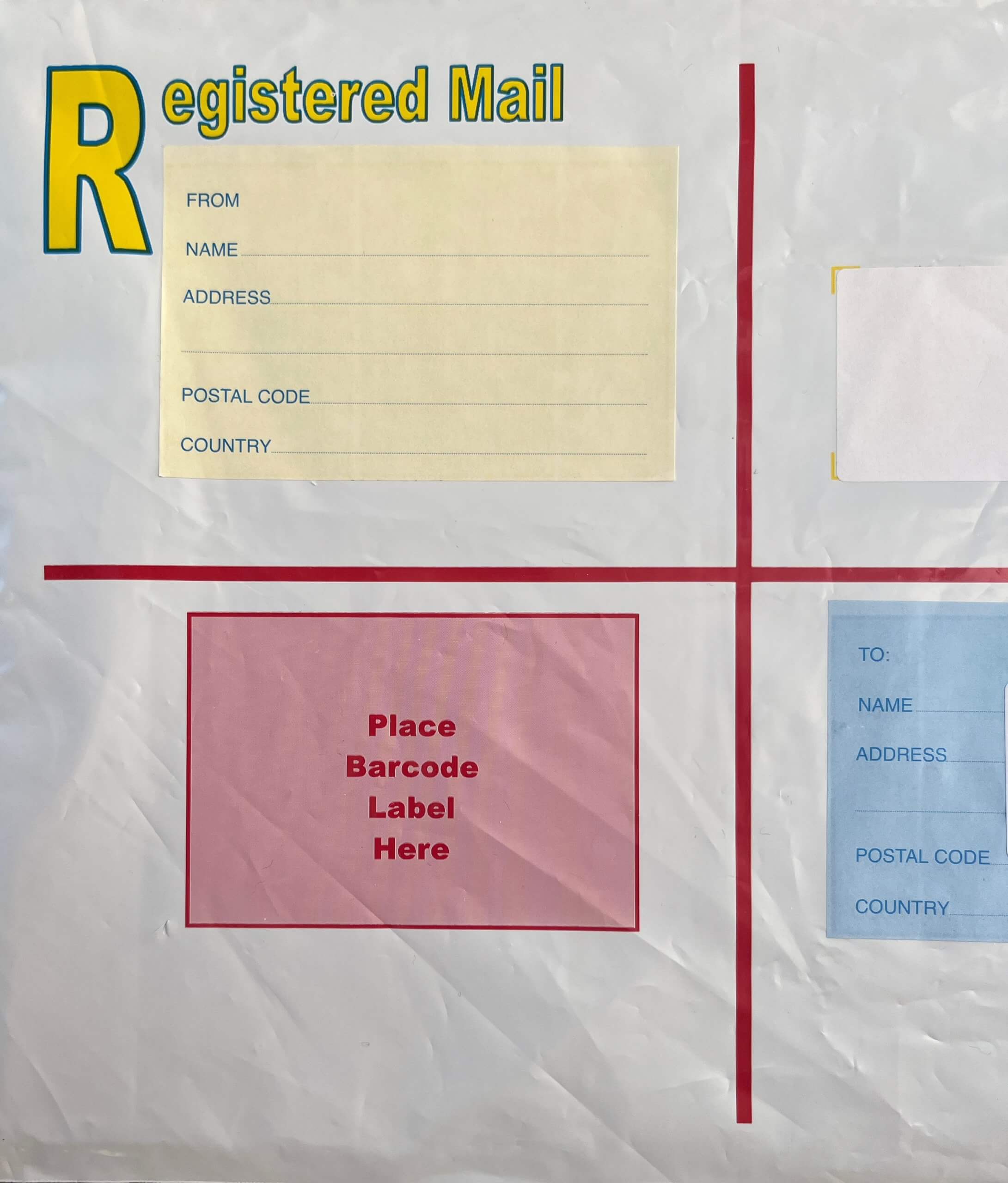
Modern postal history is an often overlooked area of philately, especially when it comes to very recent material such as Registered Envelopes. In the UK, few people attempt to collect the very latest commemorative issues on cover for several reasons, not least of which is finding them commercially used is a massive challenge. The only real way to achieve this now is to create ‘philatelic items’, i.e., covers specifically created to go into a collection rather than being the product of a normal postal service.
In Barbados philately it’s much the same, with very few current covers arriving on the market. At best, a few envelopes and postcards appear in online auction platforms, but these are sporadic at best and mostly very similar.
Throughout the history of Barbados philately, people have collected Registered Envelopes as these typically paid not only a higher rate and therefore had some of the higher values used on a cover, but they also attracted a range of cancellations meaning one could track the journey route and timings. From the reign of Queen Victoria, these envelopes were a solid card like material ensuring that anything posted within them stayed safe throughout the journey. The use of this type of card envelope persisted right up until the 1980’s when the last of these were produced.
Some time after that, however, a new type of envelope was introduced and in common with many other postal administrations around the world, they went for a new plastic envelope. This envelope is used across the world and is sturdy, doesn’t rip easily and is incredibly lightweight. The downside, of course, is that it is usually disposed of once used. People rip them open as opposed to slitting it open, as they did with the older envelopes. And even if they did slit them open it has no form as it’s not solid like the older envelopes. In fact, they make pretty poor collectables, so very few are ever kept.
In all the years I have collected Barbados material, I have only found one of these new type registered envelopes for sale (I bought it of course) and other than that I have had a second one sent to me by one of my friends.
Because of that, I decided several years go that each time I went to Barbados I would attempt to buy some of these envelopes and send them back to myself from the different post offices. Whilst on the island recently, I tried to send back five covers from five different post offices, so I could get the different parish cancels on them. They come in two sizes, A5 an A4, so that meant a total of ten covers to send to myself.
Luckily, I had a couple of these plastic envelopes spare which I packed, then when I went to Bridgetown I was able to collect a couple more.
When I sat down to address them to myself I noticed that the smaller A5 size seemed different in some way. The larger A4 envelopes were identical to those I already have and those I bought with me, but the A5 size had changed. Whilst I was comparing these two envelopes I noticed that a third envelope, sat on the desk, was different again. It turns out that there are actually three different types of these envelopes and I had all of them in front of me.

The differences between all of these are both subtle and obvious at the same time, in that we can clearly see major colour changes but it’s harder to spot typeface and font changes. Here are some closer images of the three different envelopes.



Close ups of each of the three:



Of course, there is no record of when these changed, or why they changed so we can’t tell how long any of these have been in circulation, and as there are so few retained by those who are sent them, it is unlikely that any will turn up to help us understand when the change was made.
What we can see, however, is that there are now three distinct types of these envelope:
| Type | From Box | To Box | Barcode Label Box |
| 1 | Box top left.
Blue box with printed blue writing in capitals. BARBADOS pre filled in ‘Country’ |
Box bottom right.
Blue box with printed blue writing in capitals. |
Box bottom left.
Red lined white box with ‘Place Barcode Label Here’ in red. |
| 2 | Box top left.
Yellow adhesive label with blue writing in capitals |
Box bottom right.
Blue adhesive label with writing in capitals |
Box bottom left.
Red lined pink box with ‘Place Barcode Label Here’ in red. |
| 3 | Box bottom right.
Blue lined box with printed blue writing in capitals on blue background |
Box top left.
Yellow lined box with printed yellow writing in capitals on yellow background |
Box bottom left.
Red lined pink box with ‘Place Barcode Label Here’ in red. |
By way of contrast, I have only found a single type of the A4 envelopes which is as follows:


It’s not currently possible to establish when these different types were printed, used or distributed but I believe that this is the first time it has been established that there is more than one type of these envelopes.
If anyone reading this is in possession of any used examples of these then perhaps we might be able to piece together a pattern of dates. If so, feel free to get in touch or leave a comment below.

Good luck 🙂
Good luck 🙂